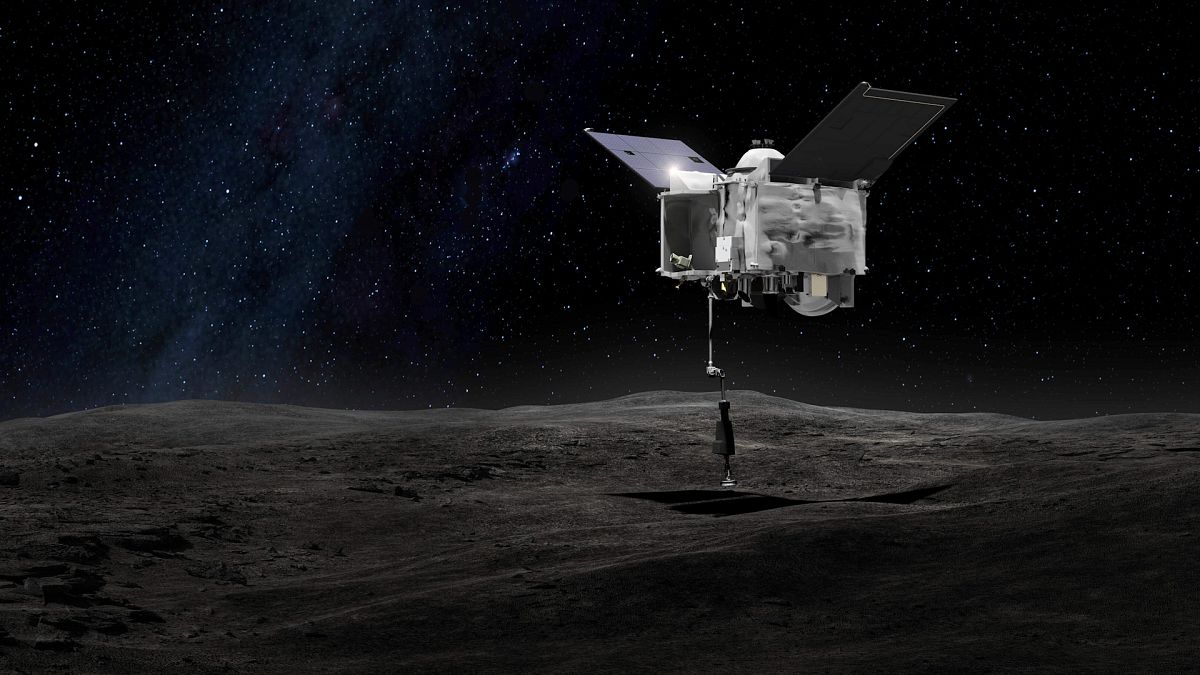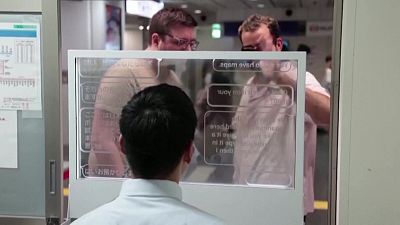The samples were collected by the unmanned OSIRIS-REx space probe which was launched from Cape Canaveral in 2016.
Inside a pristine lab in Houston, scientists are gearing up the return of OSIRIS-REx, the space probe that NASA launched to space in 2016.
The unmanned craft will be returning with particularly precious cargo: samples taken from the asteroid Bennu which could potentially unlock the secrets of how life began in the Solar System.
The collected specimens of rock and dust will be divided into samples to analyse immediately and samples to be stored away for the future, so that new generations with more advanced technology can conduct their own research.
"We don't expect there to be anything living but [rather] the building blocks of life," Nicole Lunning, the lead OSIRIS-REx sample curator, explained.
"That's really what motivated going to this type of asteroid, to understand what the precursors were that may have fostered life in our solar system and on Earth," she added.
The spacecraft is scheduled to touch down in Utah on September 24, carrying the roughly 250g of material it collected from the asteroid in October 2020.
Despite fastidious planning for the mission, collecting the samples proved no easy feat.
During the process, the probe came into contact with the asteroid for a few seconds and a blast of compressed nitrogen was emitted to raise the dust sample and capture it.
However, scientists became concerned when a valve of the compartment failed to close, allowing some of the precious samples to escape into space.
Ultimately the specimens were successfully transferred into a capsule in the centre of the craft and secured.
Japanese probes in 2010 and 2020 were the first to successfully collect asteroid samples and return them to Earth.
The latter from 2020 was shown to contain the biological compound uracil which is one of the components of ribonucleic acid (RNA).
RNA is a polymeric molecule that is present in all living cells and essential for most biological functions.
The discovery gave credence to the theory that life on Earth may have partly originated in outer space when asteroids crashed into the planet carrying fundamental elements.
"These samples haven't hit the Earth. They haven't been exposed to our atmosphere. They haven't been exposed to really anything except harsh space for billions of years," Eve Berger, a Cosmochemist at NASA, said.
Ultimately they "will help us to determine whether what we really think is true, is true," she added.
And it’s not just the prospect of increasing our knowledge of how life came to be in our world that has scientists excited.
"If we can figure out what happened here on the Earth, that helps us to extrapolate to other bodies where we might look or how we might interpret what we're seeing," said Berger.
For more on this story, watch the video in the media player above.



